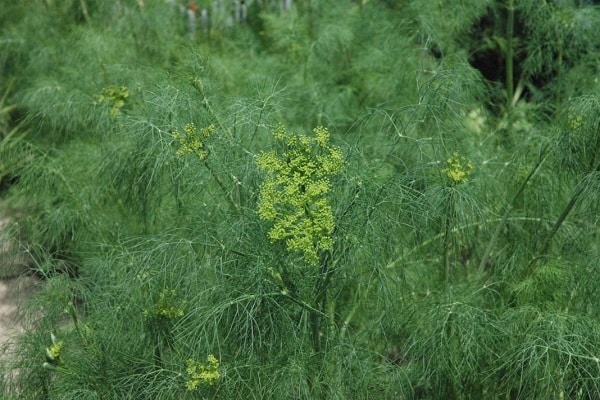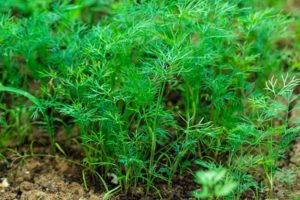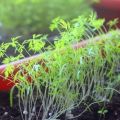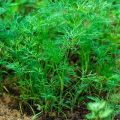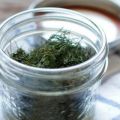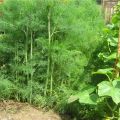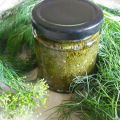How to properly grow and care for dill in a greenhouse in winter
In certain regions, it is impossible to grow some crops in the open field, so summer residents install them in greenhouses. Then they plant everything that the family needs in them. It is not difficult to grow dill in a greenhouse, for everything to work out, you must follow the agrotechnical rules for planting and caring for plants.
Features of growing dill in a greenhouse
It is not difficult to grow greens in a greenhouse in winter, only varieties must be selected that are resistant to weather conditions. In winter, there is an acute lack of heat and light. Dill grows well in a greenhouse, you just need to take care of equipping the room with light.
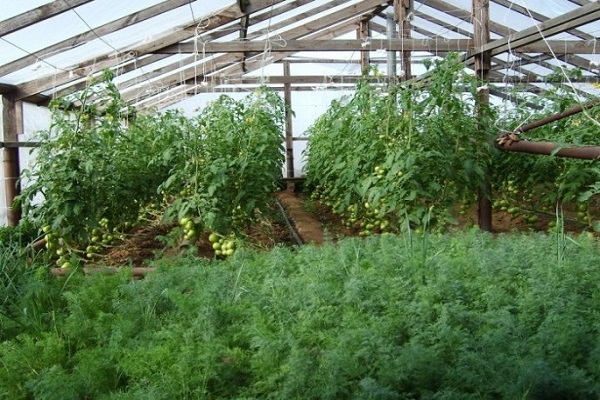
Various varieties of the crop are excellent in the harsh winter conditions. It is necessary to choose bush species, they provide more greenery and do not release the arrow too early.
In order to provide themselves with greenery for the whole year, summer residents plant dill in a greenhouse in the fall. And then they sow it again. This is done so that the greens grow constantly. Seeds are sown 2 times a month. Depends on the amount of greens consumed by a particular family.
If the plant turns white, this is a sure sign that it is missing something. It is necessary to feed with mineral fertilizers. Introduce humus into the soil before planting.
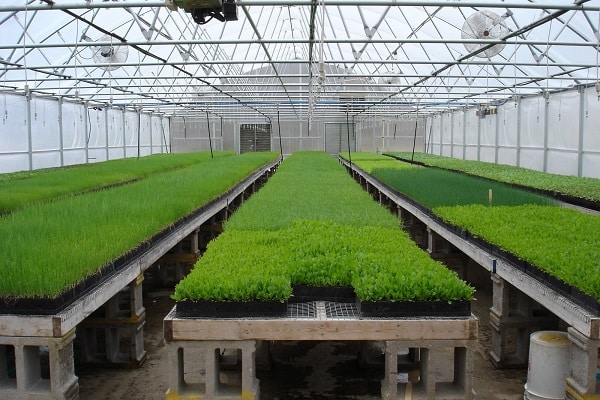
Which variety to choose
The harvest depends on the correct choice. Modern selection provides summer residents with a large selection of plant varieties for obtaining greenery. The selection begins with the main characteristics of dill:
- cold resistance;
- yield;
- susceptibility to disease;
- what time is it dill grows bush without releasing color;
- exactingness to care.
And many other properties of the culture, which become fundamental when choosing a variety.
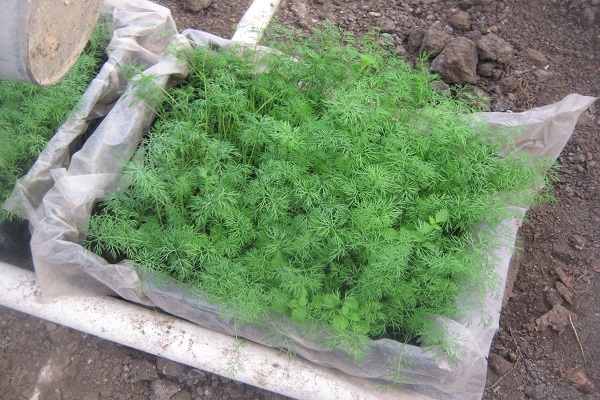
Recommended crops for greenhouses:
- Aurora;
- Diamond;
- Amazon;
- Umbrella;
- Anchor;
- Further;
- Grenadier;
- Frost;
- Carousel;
- Kibray;
- Kutuzovsky;
- Sevastopol.
After reviewing their characteristics, the summer resident can only decide which variety suits him. In addition to being resistant to a lack of light, these varieties do not bloom for a long time and give a rich harvest.

Soil preparation
Dill is an unpretentious crop that does not have special requirements for the composition of the soil in which it grows. More suitable is a soil that is moderately fertile and absorbs water well. Since the plant has long roots, the thickness of the fertile layer is not less than 0.5 m.
Humus provides essential trace elements that greens need for growth and development. The calculation is made as follows: 1m2 the area of the greenhouse is 2-3 kg.Instead of humus, sand, peat, biohumus and other substances are used that can increase the water and air permeability of the soil.
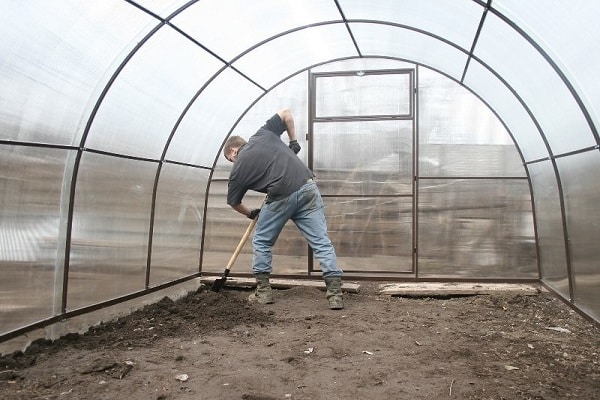
Together with humus, use 15-20 g of urea, 20-30 g of superphosphate, 15-20 g of potassium salt per 1 m2.
Before planting, the bed is watered and loosened. Grooves are made at a distance of 15-20 cm.

Sowing features
Dill is grown in grooves, lines, or whatever is convenient. Embedding depth is 1.5-2 cm, planting is carried out every 10-15 days. In order for fresh herbs to be ready for use no later than the previous one.
Before sowing dill planting material, soak it in water for 2 days. The water is changed every 8 hours, since essential oils are better eliminated in pure water.
Seeds are laid out in grooves, sprinkled with soil on top. Moisten slightly with water.
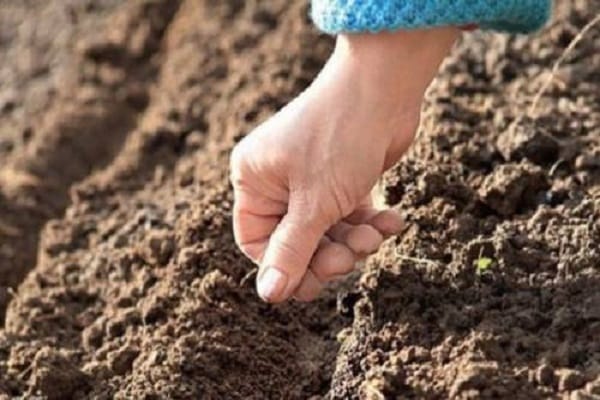
Some summer residents prefer to plant seeds in a different way. The planting material is poured out, leveled with a rake. After emergence, thinning is necessary.
The torn plants are not thrown away, but transplanted to obtain even more greenery.

Greenhouse dill care
It is necessary to take care of the plant in the same way as in the open field. The fulfillment of simple requirements will help to grow a rich harvest. Summer residents who decide to plant dill in a greenhouse should remember that breeders are developing new varieties that are resistant to diseases and non-standard growing conditions. Therefore, sometimes it is enough to correctly select the types of crops, and the harvest will certainly please.
Temperature regime
Dill is cold-resistant, but loves warmth. The greenhouse room should be at least + 15 ... + 18 ⁰С, drafts should not be allowed. The optimum temperature will help the plant develop properly and proportionally.
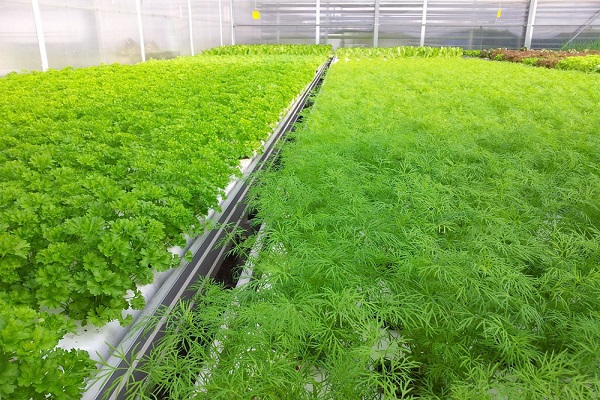
Light mode
Lighting is necessary for dill so that the stems do not stretch, but develop normally. Approximate time is 12 hours, in winter, when there is a lack of natural light, greenhouses are equipped with phytolamps. The lower racks are especially carefully illuminated.
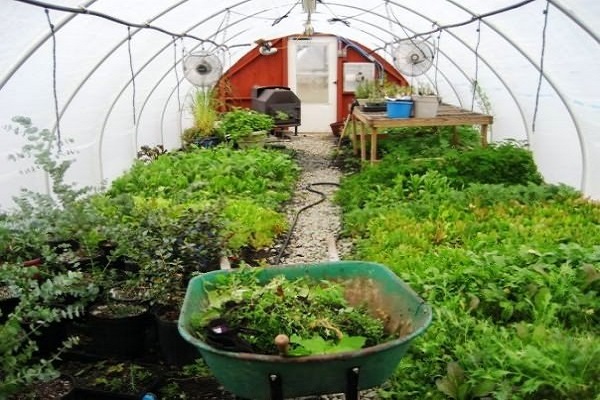
Watering
Dill requires constant soil moisture, but it does not need to be poured either. Immediately after sowing, the lanes are watered from a spray bottle. So it is more likely that the seeds will not wash out.
After the dill rises, watering is carried out every 5-7 days, after the soil has partially dried out. It is advisable to use warm water.
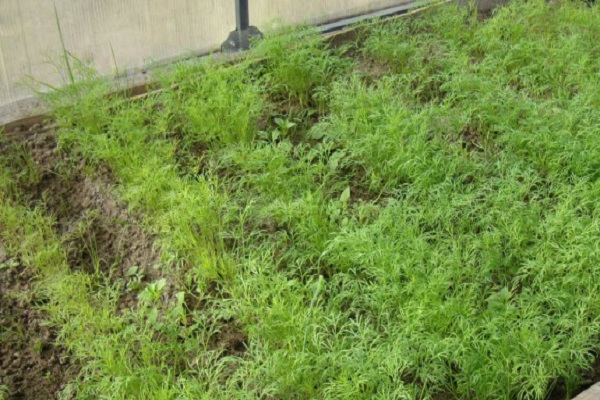
Fertilizers
You need to feed as you grow. But they begin even during sowing, adding humus, urea and other mineral fertilizers to the soil.
1-2 times during the growing season are fed with the following composition:
- 20-25 g of urea;
- 15-20 g of potassium salt;
- 10 liters of water.
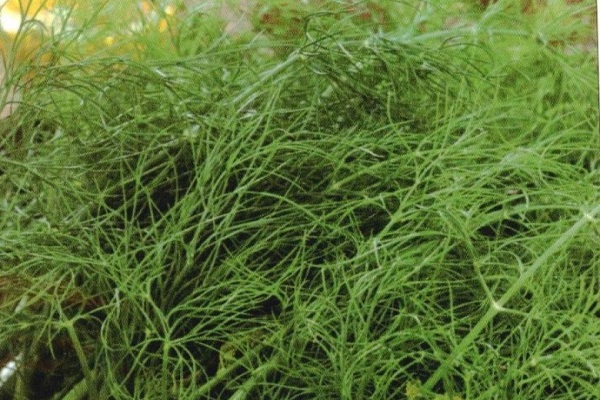
After watering with a solution under the root, it is necessary to moisten it with warm water.
If the color of the greens changes to yellow-green, fertilization should be carried out with fertilizers containing nitrogen. Approximate composition: 15-20 g of fertilizer per 10 liters of water.
If the color of the greens is deep green, do not get carried away with feeding. Dill accumulates nitrates in the green mass.
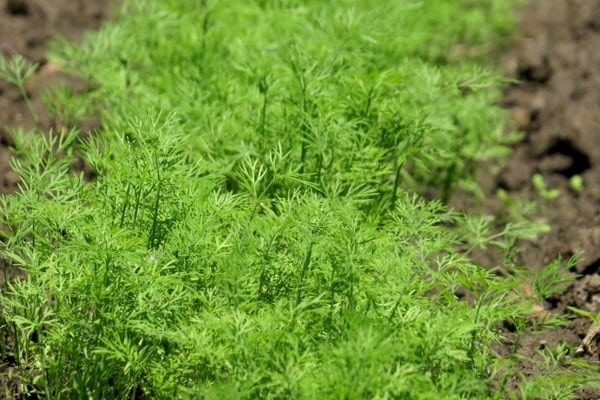
Thinning
When the plants are 10 cm tall, they begin to thin out. Strong specimens are pulled out, dried or transplanted to a new place. Meanwhile, the oppressed sprouts gain strength and begin to grow normally. Or every second sprout is removed to ensure freedom of development for the rest.
Weeding
Weed removal is necessary in the initial stages, until the dill begins to grow vigorously. Weeds draw a lot of nutrients from the soil, which prevents the greenery from developing normally. Their timely removal will help the plant to grow fully and give a good harvest.
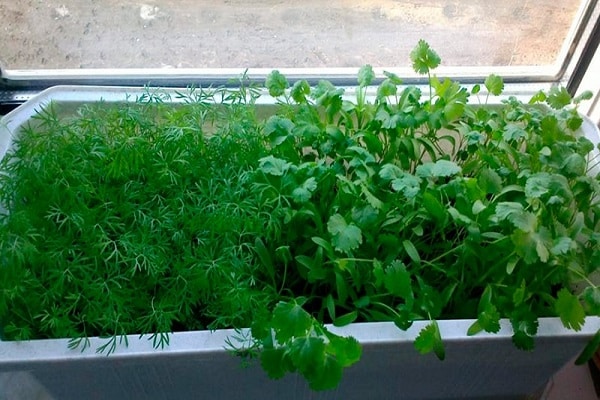
Loosening
Equipping the root system of greenery with oxygen is achieved by loosening. This must be done carefully so as not to damage the plant roots. It will also help retain moisture in the soil.
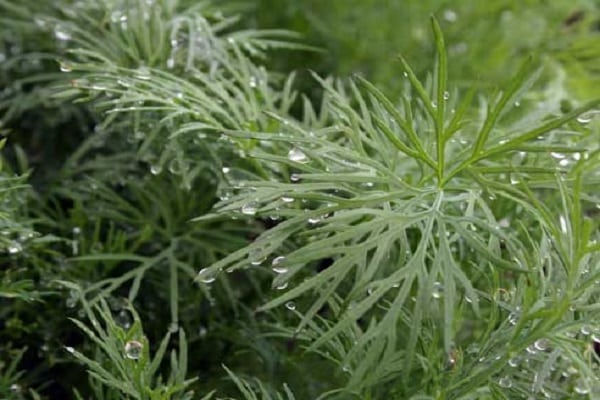
Diseases
Observing cultivation techniques, outbreaks of diseases are avoided. But despite this, dill is amazed:
- powdery mildew;
- fusarium wilting;
- black leg.
To prevent the disease from progressing, it is necessary to observe a certain temperature regime of the greenhouse and humidity. The optimum temperature for active growth and development of dill is + 17 ⁰С, humidity is not less than 55%. With moderate watering and daily airing, the plants practically do not get sick.
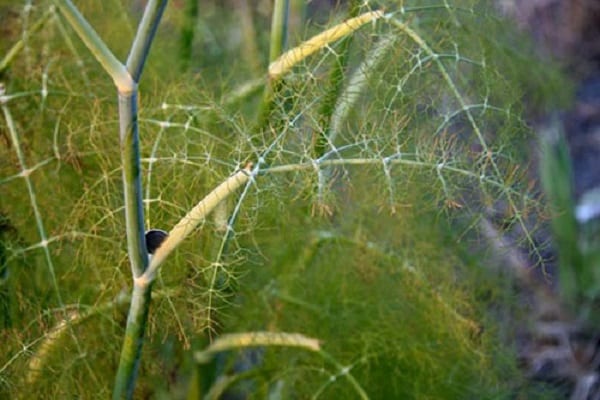
Pests
Insects harm both the green mass and the root system of dill. The underground part of the plants suffers from attacks:
- bear;
- caterpillars;
- beetle larvae;
- wireworm.
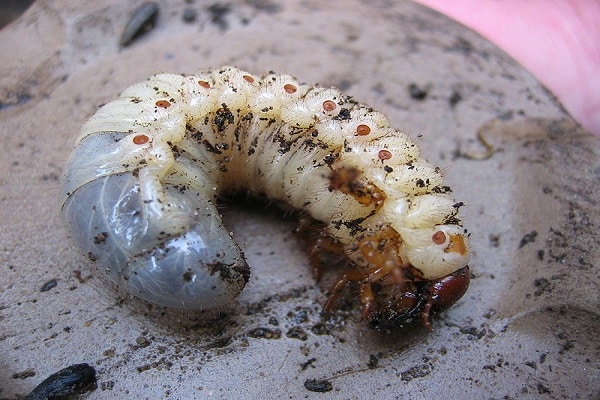
The aerial portion of dill suffers from:
- bedbugs;
- cicadas;
- ticks;
- thrips.
Observance of crop rotation, compliance with agrotechnical requirements, or the most extreme option, treatment of plants with chemicals, will help to save plants from death. Poisons should be used only when the culture is grown to obtain planting material.
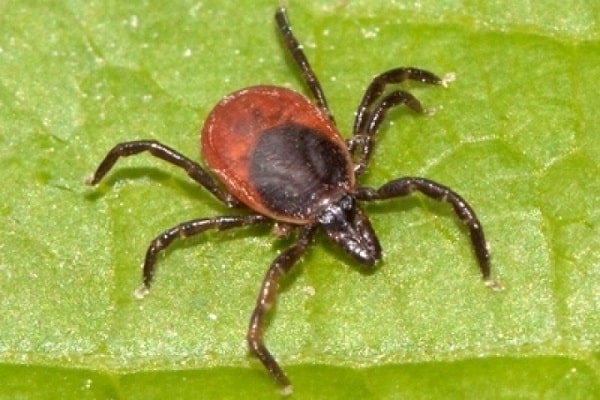
Harvesting
The numerous criteria for choosing a variety by summer residents are different, but there is one important property that every vegetable grower takes into account. It's about the yield from 1 m2.
When all the requirements for caring for dill are met, the finished crop should be 2.5 kg from 1 m2... This figure differs depending on the variety and growing conditions.
The first leaves are cut early, several weeks after planting. Collect the greens that remain after thinning.
In order to get high-quality dill, it is recommended to cut the leaves at the root and not let the arrow be thrown out. A plant that throws energy into the seeds stops forming green mass.
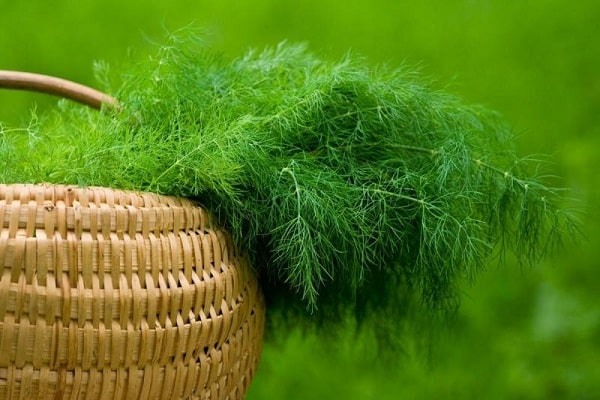
Before you start cutting the leaves, you must sprinkle them with water. Then prune, leaving the roots in the ground. So there is a chance that the greens will grow again, only you will need to water it abundantly.
Fresh herbs are used to enhance the flavor of the finished dish. It is added fresh or dried.
Dill is best dried in a well-ventilated, shaded area. So the plant retains nutrients and smell.
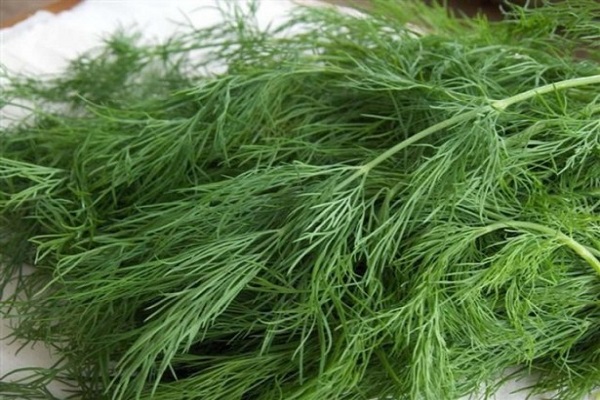
For those who use dill for pickling, it is better to wait for the culture to bloom. But have time to cut before the formation of seeds.
Growing dill in a greenhouse is relevant today. Summer residents harvest on the site in summer, but they want to have fresh vegetables and fragrant greens on the table in winter. This is not difficult to accomplish. You just need to acquire a suitable greenhouse, acquire a good variety and fulfill the planting and maintenance requirements. Compliance with all standards will allow you to get a harvest of dill in the winter months.
